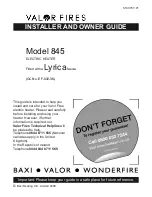
OPERATING PROCEDURES
Read all of this manual to become thoroughly familiar with this vehicle. Pay particular attention to all Notices, Cautions, Warnings, and Dangers.
4 - 4
4
4
4
4
PORTABLE CHARGER INSTALLATION
Risk of electric shock. Connect charger power cord to an outlet that has been properly
installed and grounded in accordance with all local codes and ordinances. A grounded
outlet is required to reduce risk of electric shock – do not use ground adapters or modify
plug. Do not touch uninsulated portion of output connector or uninsulated battery termi-
nal.
Disconnect the DC supply before making or breaking the connections to the battery while
charging. Do not open or disassemble charger. Do not operate charger if the AC supply
cord is damaged or if the charger has received a sharp blow, been dropped, or otherwise
damaged in any way – refer all repair work to qualified personnel. Not for use by children.
Use charger ONLY on 48 volt battery systems. Other usage may cause personal injury and dam-
age. Lead acid batteries may generate explosive hydrogen gas during normal operation. Keep
sparks, flames, and smoking materials away from batteries. Provide adequate ventilation during
charging. Never charge a frozen battery. Study all battery manufacturers’ specific precautions
such as recommended rates of charge and removing or not removing cell caps while charging.
Portable chargers must be mounted on a platform above the ground or in such a manner as to per-
mit the maximum air flow underneath and around the charger.
Portable chargers are shipped with the vehicles. Prior to vehicle or charger operation, the charger
must
be removed
and mounted on a platform or wall above the ground to permit maximum air flow around and underneath the charger.
A dedicated circuit is required for the charger.
Refer to the charger manual for appropriate circuit protection. For
optimum performance and shortest charge times, place the charger in an area with adequate ventilation. The char-
ger should also be placed in an area that will be relatively free of dirt, mud, or dust since accumulations within the
fins of the charger will reduce their heat-dissipating qualities. Optimal cooling also occurs when the charger is placed
on a horizontal surface with the fins vertical. More airflow from below the charger will help cool the fins, so placement
above open areas or areas with cut-outs for airflow is desirable. If the charger is operated in an outdoor location, rain
and sun protection must be provided. The charger may get hot during operation and must be placed such that risk of
contact by people is reduced. The charger may be mounted on a wall or shelf using #10-M5 screws. The charger’s
status display must be visible to the user.
Содержание 622014
Страница 1: ...622014 Owner s Guide ISSUED JULY 2011 REVISED APRIL 2013 ...
Страница 81: ......
















































